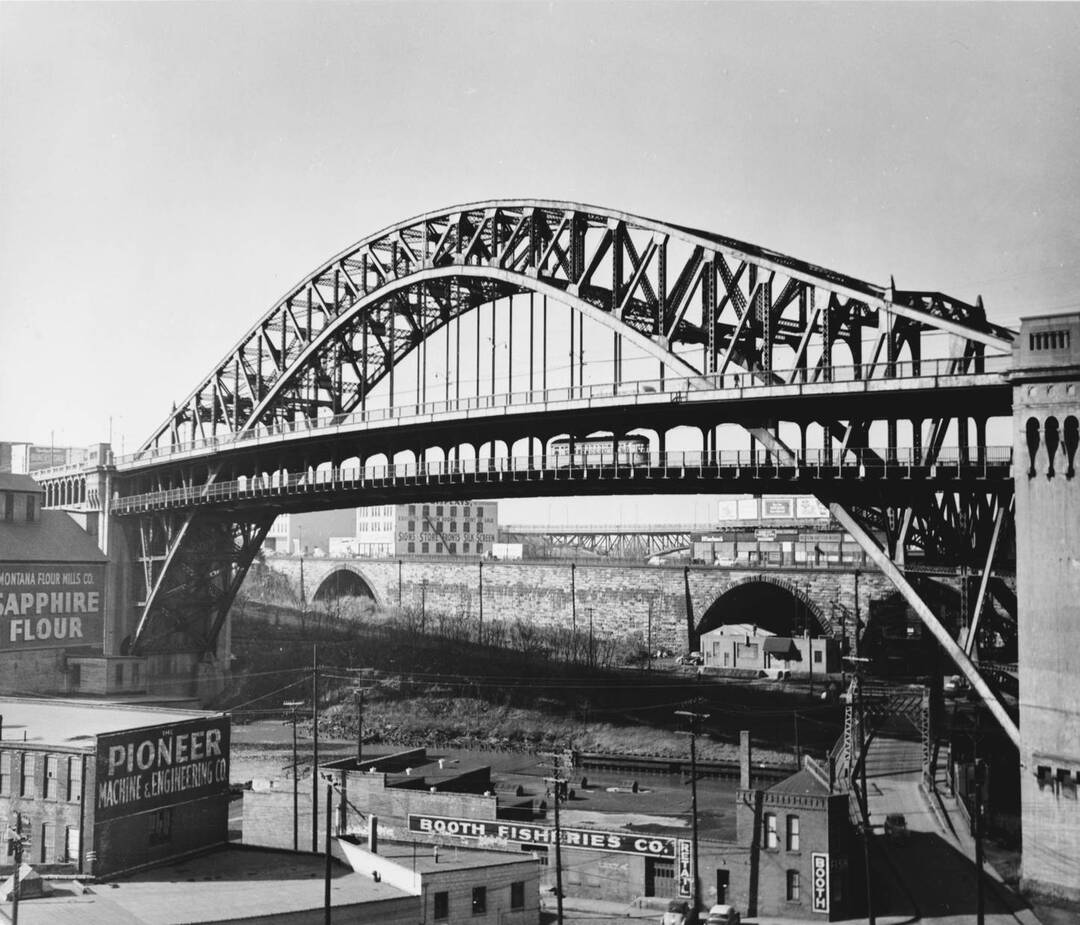
Bathed in blue light at night, the Detroit-Superior Bridge (also known as the Veterans Memorial Bridge since 1989) is a striking feature on the Cleveland skyline just west of Public Square. Cleveland's King Bridge Company built the span between 1912 and 1917 at a cost of over five million dollars. This 3,112-foot-long compression arch, suspended-deck bridge was the first fixed high-level bridge in the city and, for a time, one of the largest steel and concrete reinforced bridges in the world. Its single steel span over the Cuyahoga River provides 96 feet of clearance above the water, allowing for uninterrupted vehicle traffic. At the time of its completion this was a vast improvement over the older Superior Viaduct, whose center span was forced to swing open several times a day in order to allow boats to pass underneath, stopping bridge traffic for five or more minutes.
Until the end of Cleveland's streetcar era in the mid-1950s, the lower deck of the Detroit-Superior Bridge carried streetcars on its four sets of tracks. To this end, a subway and underground passenger stations were built below its east and west approaches. Meanwhile, vehicular traffic on the upper deck of the bridge was heavy in the years following the bridge's opening on Thanksgiving Day 1917, and traffic tie-ups often occurred. These lessened with the opening of the city's second fixed high level span – the Lorain-Carnegie Bridge – in the 1930s. More recently, the development of the interstate highway system, with its various high-level spans over the Cuyahoga River, has further diminished the bridge's importance to commuters. However, the Detroit-Superior Bridge remains a key feature in Cleveland's built environment and an impressive example of architectural and engineering expertise.
Video
Images





